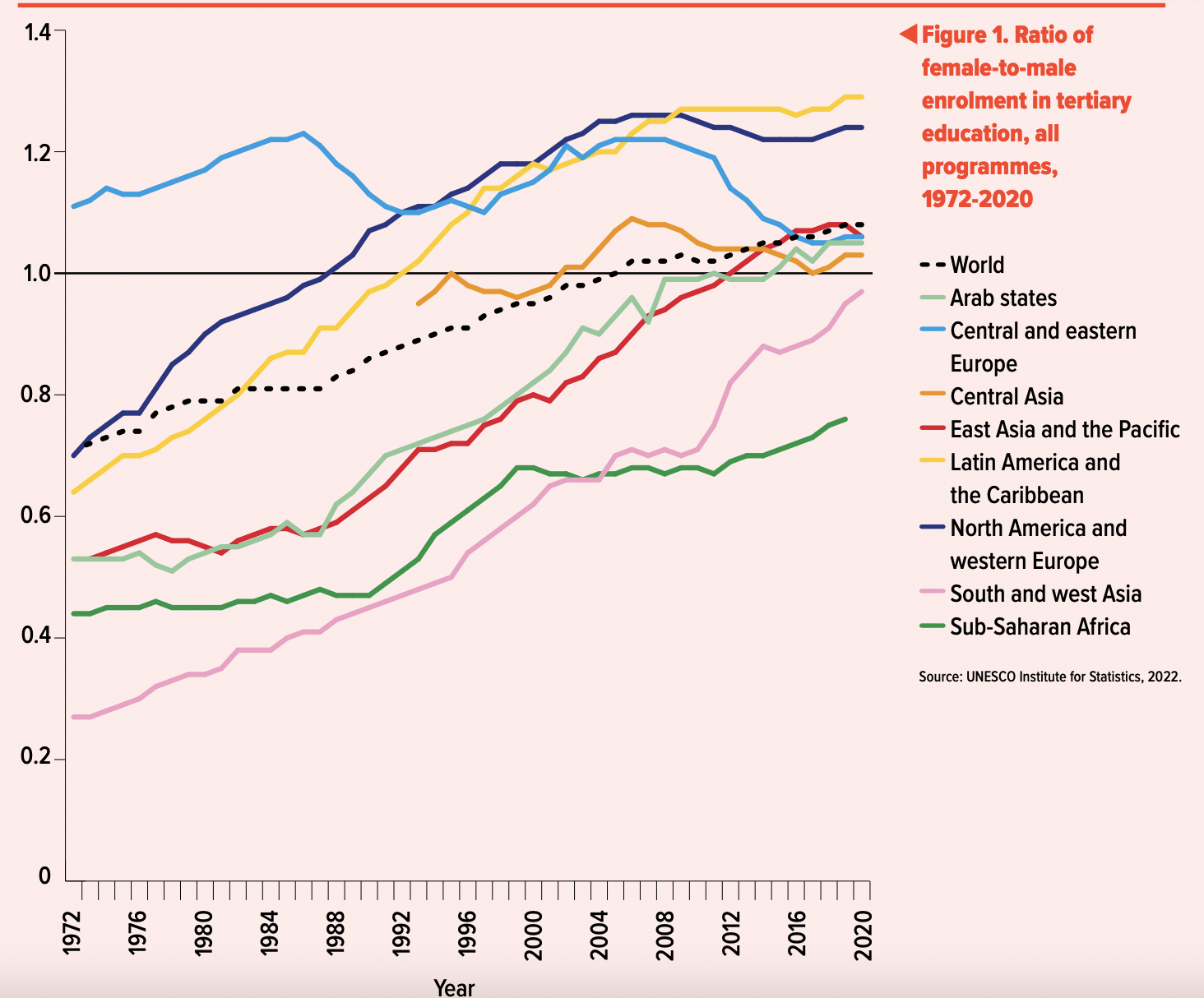Over the past few decades, the number of women attending universities has consistently been higher than the number of men. In the United Kingdom, for example, 57% of university students are women, while 43% are men. This trend is not limited to the UK, as similar patterns have been observed in other countries around the world. In this article, we will explore some of the reasons behind this trend and the implications of having more women than men at universities.

One of the main reasons why there are more women than men at universities is that women have made significant progress in terms of access to education in recent years. In many countries, laws and policies have been put in place to promote gender equality in education, and these efforts have contributed to the increasing number of women who are able to attend university.
Another reason why there are more women than men at universities is that women tend to outperform men in terms of academic achievement. Studies have consistently shown that women tend to have higher grades and test scores than men, and this may be one of the factors that contributes to their higher enrollment in universities.
The trend of having more women than men at universities has a number of implications, both for the individuals involved and for society as a whole. On an individual level, having more women at university may lead to greater opportunities and success in the job market. Studies have shown that women who have a university degree tend to earn more and have better job prospects than women who do not.
On a societal level, having more women than men at universities may have a number of positive effects. For example, it may lead to a more balanced and diverse workforce, as women bring different perspectives and skills to the table. It may also help to reduce the gender gap in terms of pay and career advancement, as women who have a university degree may be more likely to be promoted and to receive equal pay for equal work.
Despite the fact that women are increasingly represented in higher education, there are still fewer women than men in science, technology, engineering, and math (STEM) fields, particularly in computer science. This is a concern because STEM fields are growing rapidly and are expected to play a major role in the future economy. Studies have shown that having a diverse workforce in STEM fields can lead to better problem-solving, innovation, and overall performance. However, the underrepresentation of women in these fields may limit the potential benefits of diversity and may have negative consequences for both women and the STEM fields themselves. There are a number of factors that contribute to the underrepresentation of women in STEM fields, including bias, stereotypes, and a lack of role models. In order to promote gender diversity in these fields, it is important to address these issues and to provide support and opportunities for women to succeed in STEM careers.
While having more women than men at university may have a number of benefits, it is important to consider the potential disadvantages as well. It is also important to ensure that men have equal access to education and that they are not disadvantaged in any way. In order to achieve true gender equality in education, it is important to ensure that both women and men have the opportunity to succeed and reach their full potential.
Another potential disadvantage of having more women than men at university is that it may lead to a gender imbalance in certain fields or industries. For example, if there are more women than men in a particular field or industry, it may be more difficult for men to find job opportunities in that field. This could lead to a situation where men are underrepresented in certain fields or industries and may face discrimination or bias as a result.
In conclusion, the trend of having more women than men at universities is a result of a combination of factors, including progress in terms of access to education and higher academic achievement among women. While this trend has a number of implications, it is important to ensure that both women and men have equal opportunities in education and the job market.
You can read more about the status in these two reports:
– https://www.timeshighereducation.com/sites/default/files/the_gender_equality_report_part_1.pdf
– https://www.timeshighereducation.com/sites/default/files/the_unesco_gender_equality_report_part_2.pdf
